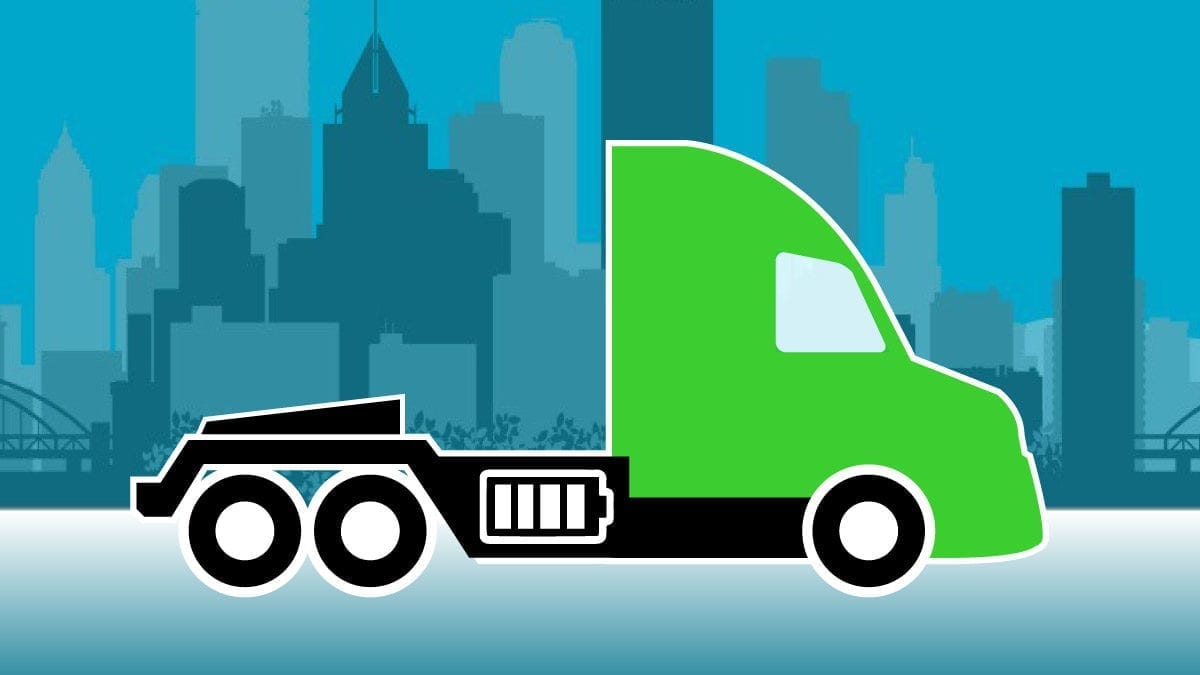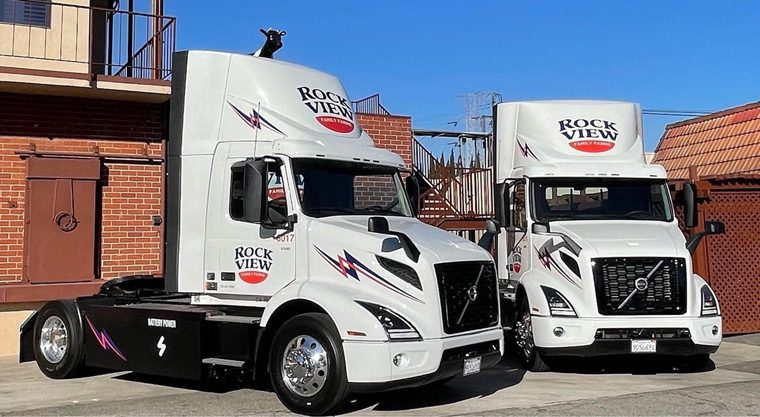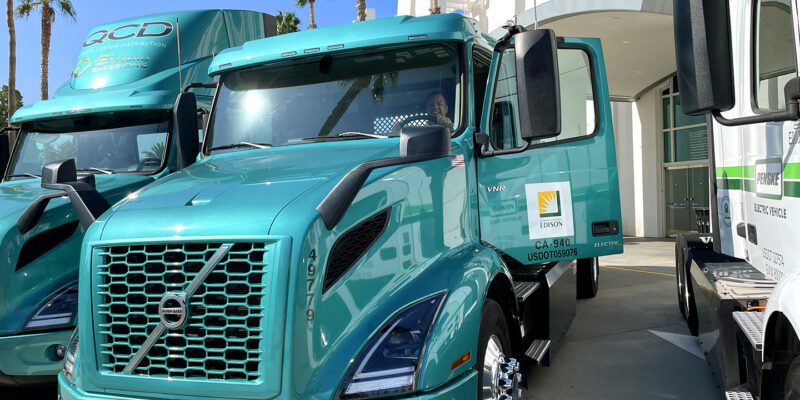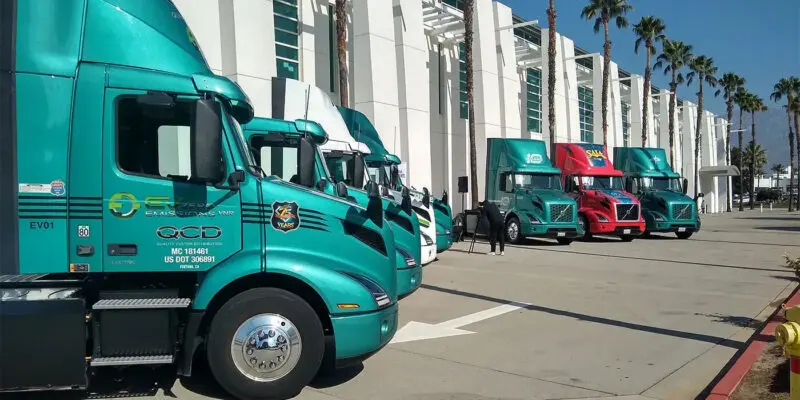News & Media

Electric Vehicles 101: A Guide to Electric Vehicle Types
Electric vehicles—whether battery electric, fuel cell electric, or plug-in hybrid—use electricity to power a vehicle’s motor. The key differences between each is the method in which energy is created, stored, and used to power the vehicle. This article outlines the three main types of heavy-duty electric vehicles, how they differ, and the benefits and drawbacks of each.
Battery Electric Vehicles (BEVs)
Battery electric vehicles, also known as BEVs, are solely powered by electricity. The electricity used to power the vehicle’s motor is stored in an onboard battery, which is charged by plugging the vehicle into a charger to transfer energy from the electricity grid to the vehicle’s battery. An electric vehicle charging cable can be plugged into a standard household outlet (110-Volt) or higher voltage alternatives depending upon the capacity of the onboard charger and the speed of charge desired. Battery electric vehicles are referred to as “all electric” vehicles because they do not use gasoline, diesel, or any other power source besides electricity.
Battery electric vehicles are referred to as “all electric” vehicles because they do not use gasoline, diesel, or any other power source besides electricity.
Unlike gasoline-fueled vehicles, battery electric vehicles do not produce exhaust from a tailpipe—in fact, they don’t even have a tailpipe or any other fuel components such as a gas tank or a fuel pump. Battery electric vehicles are classified as zero emission or emission free because they produce no direct exhaust or direct emissions while operating.
Fuel Cell Electric Vehicles (FCEVs)
Fuel cell electric vehicles, or FCEVs, use hydrogen gas stored in an onboard tank to power a vehicle’s electric motor. Fuel cell electric vehicles are considered electric vehicles, but they do not need to be plugged in to be re-charged. Instead, energy stored as hydrogen is converted to electricity by an onboard fuel cell, and that electricity then powers the vehicle.
Fuel cell electric vehicles are also considered zero emission or emission free vehicles, as they only emit water vapor and warm air.
Fueling a FCEV with hydrogen gas is comparable to fueling a vehicle with natural gas, diesel or gasoline in that they are fueled with dispensers and nozzles similar to those use with these other vehicles. In the case of FCEVs, pressurized hydrogen gas is delivered to a hydrogen station where drivers can refuel. A FCEV’s range—i.e., how far a vehicle can run without needing to be recharged or refueled—is closer to that of a conventional vehicle, making it more conducive for applications with longer duty cycles when compared with today’s battery technology.
Plug-In Hybrid Electric Vehicles (PHEVs)
Plug-in hybrid electric vehicles, or PHEVs, use a combustion engine together with an electric motor. There are many types of hybrid vehicles which are powered in different ways; however a PHEV can be recharged by plugging it into an electric power source. PHEVs typically have smaller battery capacity than BEVs since they rely on the energy stored in fuel tanks to deliver most of the range. While they are capable of some all-electric operation, this is usually limited due to the size of the battery and the electric motor. Nevertheless, the ability to capture kinetic energy during braking and deceleration does enable significant fuel savings.
Comparing Benefits of Electric Vehicles
Battery electric and fuel cell electric vehicles produce zero emissions and are cleaner, quieter, and operate more efficiently than conventional internal combustion engines.
Battery, plug-in hybrid and fuel cell electric vehicles are all cleaner, quieter and operate more efficiently than conventional internal combustion engines. Additionally, fewer moving parts in both fuel cell electric and battery electric vehicles could mean less vehicle maintenance overall.
Although neither FCEVs nor BEVs produce tailpipe emissions—the total emissions produced over the vehicle’s entire lifecycle including manufacturing, fuel sourcing, and battery production can vary.
When considering driving range, FCEVs tend to have less limitations than BEVs. Increasing the driving range for a FCEV requires increasing the number of onboard hydrogen storage tanks, which might not be possible in every vehicle configuration like shorter wheelbase tractors. Increasing range in BEVs by increasing the number of batteries also poses packaging and weight challenges, which should become easier as energy density continues to improve. FCEVs can refuel at hydrogen stations approximately as fast as CNG vehicles. The time to recharge BEVs depends on the type of charger used. Faster charging technology and standards are under development, which aim at delivering recharge times similar to refueling time for conventional diesel or gasoline vehicles. Access to sufficient electric charging and hydrogen fueling stations remains one of the major obstacles, and biggest challenges, for widescale FCEV or BEV use.


